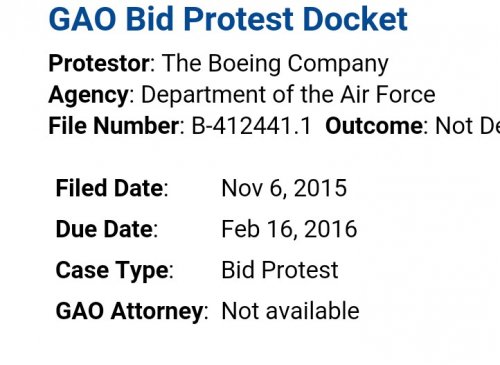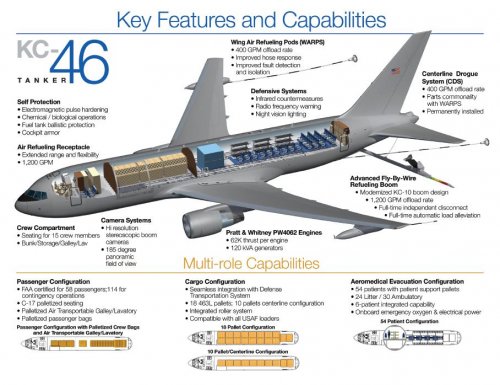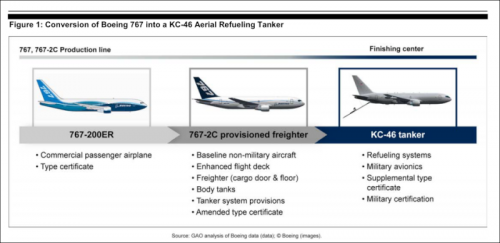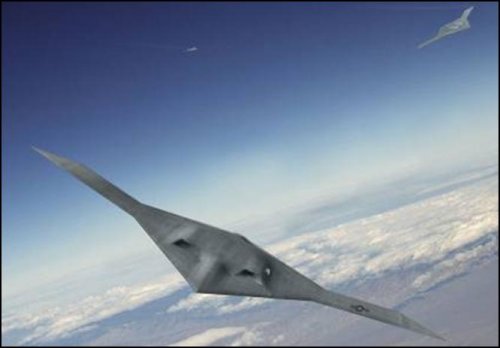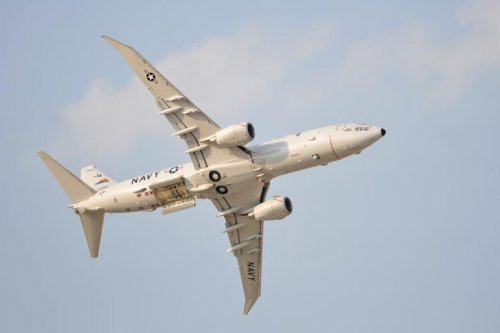Boeing Protests Bomber Award
—John A. Tirpak11/9/2015
Boeing, with its partner Lockheed Martin, officially informed the Air Force on Friday that it would protest the service’s award of the Long-Range Strike Bomber program—potentially worth up to $80 billion—to Northrop Grumman. The Government Accountability Office now has 100 days to evaluate the protest and determine if it has merit. Boeing, in a press statement, suggested it offered a lower price on the program and questioned Northrop Grumman’s technical and financial ability to carry the program out. The selection process was “fundamentally flawed,” Boeing said. “The cost evaluation performed by the government did not properly reward the contractors’ proposals to break the upward-spiraling historical cost curves of defense acquisitions, or properly evaluate the relative or comparative risk of the competitors’ ability to perform, as required by the solicitation.” According to the statement, the award to Northrop Grumman was a mistake, because the Boeing team offers “the best LRS-B at a cost that uniquely defies the prohibitively expensive trends of the nation’s past defense acquisitions.” Boeing has used this tactic before: in 2008, it protested the Air Force’s award of the KC-X tanker program to European Aeronautic Defense Systems (now Airbus), then partnered with Northrop Grumman, and was successful in overturning the award, getting the competition re-opened, and winning the restructured contest in 2011.
The Air Force Responds to Boeing's LRS-B Protest
—John A. Tirpak11/9/2015
The Air Force on Friday defended its handling of the Long-Range Strike Bomber competition, despite Boeing’s protest of the award. Though “it is every competitor’s right to file a protest, the Air Force is confident that the source selection team followed a deliberate, disciplined, and impartial process to determine the best value for the warfighter and taxpayer,” USAF spokesman Maj. Robert Leese said. “The Air Force will fully support the [Government Accountability Office’s] independent process. Once resolved, we look forward to proceeding with the development and fielding of the LRS-B aircraft.” The GAO has 100 days from today to evaluate Boeing’s claims: that Northrop Grumman underbid the contract, that new technologies and the experience of the Boeing/Lockheed Martin team were not properly credited, and that Northrop Grumman lacks the financial ability to carry the project through. The 100 days is an upper limit; the GAO may determine in a shorter period of time that the protest lacks merit. If the GAO determines there is merit in the protest, remedies could range from clarifying or resubmitting certain aspects of the competitors’ offers all the way up to throwing the competition out and demanding the Air Force start over. That’s what happened in 2008, when Boeing protested the Air Force’s award of the KC-X tanker contract to a team of Northrop Grumman and EADS (now Airbus). When the Air Force established new rules for a recompetition of the contract, Northrop Grumman withdrew, saying the requirements had been written to favor Boeing’s 767-based proposal. Airbus re-bid the KC-45 but lost the contest to what became the Boeing KC-46 tanker.
Northrop's Reaction
—John A. Tirpak11/9/2015
Northrop Grumman, which won the contract for the Air Force’s Long-Range Strike Bomber, said it was “disappointed ... its former LRS-B competitors have decided to disrupt a program that is so vital to national security” by protesting the award. Randy Belote, a company spokesman, said the Air Force “conducted an exceptionally thorough and disciplined process with multiple layers of review. Their process took into full account the parties’ respective offerings and their relative capabilities to execute their offerings on schedule and on budget.” Northrop offered an approach “that is inherently more affordable and based on demonstrated performance and capabilities. Our record stands in contrast to other manufacturer’s large aircraft programs of the last decade.” He pointed out that Northrop Grumman is “the only company to ever design and build a stealth bomber” and offered “the best solution” in the contest. Under protest rules, Northrop Grumman must stop work on the project until the protest is resolved. The Government Accountability Office has until Feb. 15 to determine the merits of the protest. If it finds no merit in Boeing’s protest, that finding may be announced sooner.
Behind Boeing’s Protest
11/9/2015
—John A. Tirpak
It would have been tough for Boeing to explain to its shareholders why it didn’t protest losing the Long-Range Strike Bomber contract—potentially an $80 billion chunk of work—especially when there was a reasonable chance that the Government Accountability Office might sustain the complaint, and Boeing captured the $44 billion KC-46 contract after its protest threw that program back open for competition. “We have to take a shot,” an industry official said simply. Those familiar with the particulars behind the protest said Boeing believes the Air Force didn’t give the company and its partner Lockheed Martin sufficient credit for producing large numbers of airliners, F/A-18 fighters, and F-35 fighters in recent years, and for technology advances that gave them an edge in large-scale, lower-cost production techniques, and their grand system integration chops. Moreover, Boeing believes Northrop Grumman’s price offer was too good to be true, considering that Northrop Grumman doesn’t have Boeing’s extensive worldwide supplier network and volume benefits. Boeing itself underbid the KC-46, and is now more than $500 billion in the red, after taxes, on that program. But while Boeing is responsible for any overages on the tanker, the bomber contract is cost-plus, meaning that while Northrop Grumman will lose incentive fees if it fails to deliver, the Air Force will have to cover overages. (Read the full report.)

